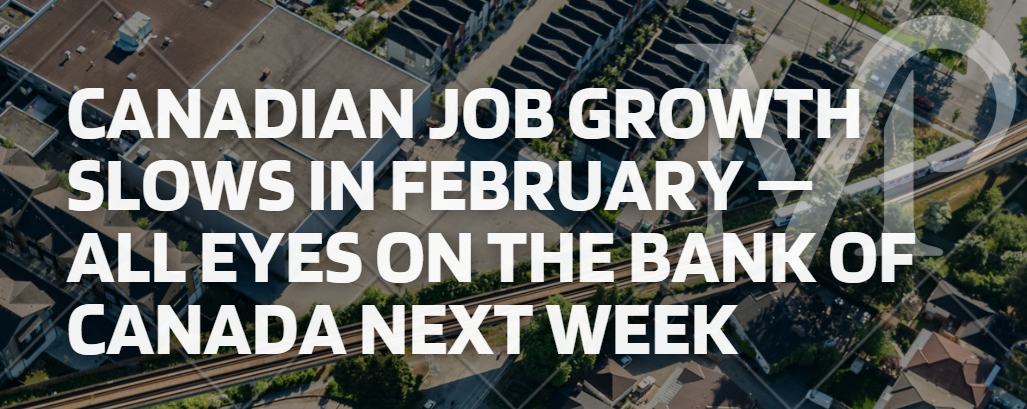April 9th, 2025: After several months of solid job gains, Canada’s labour market hit the brakes in February, adding just 1,100 jobs — a major cooldown compared to December and January’s robust growth. With economic uncertainty rising and trade tensions continuing to impact the outlook, this slowdown is adding further weight to expectations of a Bank of Canada rate cut next week.
Unemployment Holds Steady, But Momentum Slips
Despite the weak job gains, Canada’s unemployment rate remained unchanged at 6.6%, holding steady for now. However, the labour force participation rate dipped by 0.2% — its first decline since September 2024 — indicating fewer Canadians are actively looking for work.
The most notable drop was in total hours worked, which fell by 1.3%, the sharpest decline since April 2022. Much of this was attributed to the severe winter storms in early February, which reportedly impacted over 400,000 workers.
Market Reaction & Economic Insights
Following the release of the job data, the Canadian dollar slipped 0.4% before bouncing back slightly, and 5-year government bond yields dipped two basis points to 2.70%.
Economists were surprised by the flat results, especially following two strong months of job creation — +91,000 in December and +76,000 in January. While some believed the momentum would carry through, it’s clear that growing trade tensions and policy uncertainty may be dampening hiring sentiment.
Sector Breakdown
Some sectors saw solid growth:
- Wholesale and Retail Trade: +51,000 jobs
- Finance, Real Estate, and Leasing: +16,000 jobs
However, others saw notable losses:
- Professional, Scientific, and Technical Services: -16,000 jobs
- Transportation and Warehousing: -23,000 jobs
A Rate Cut Likely on the Horizon
Most economists now expect the Bank of Canada to cut its policy rate by 25 basis points next week, with trade concerns outweighing the mixed jobs data.
While the job market remains on relatively solid ground, this cooling trend — combined with international uncertainty — may prompt the BoC to act preemptively. Financial markets have already priced in a rate cut, and many are anticipating more easing later in the year if economic headwinds continue.
What’s Happening in the U.S.?
In contrast, the U.S. added 151,000 jobs in February, though its unemployment rate ticked up to 4.1%. While American job growth remains positive, expectations are shifting south of the border as well. Economists at TD forecast the Federal Reserve will cut rates three times in 2025, despite current inflation concerns.
What This Means for Borrowers
If the Bank of Canada does move forward with a rate cut next week, it could bring welcome relief for variable-rate mortgage holders and those with lines of credit. However, given the complex economic backdrop — including trade tensions and policy uncertainty — borrowers should stay informed and work with a mortgage professional to assess how changes may impact their current or future financing plans.
If you have questions about how the upcoming rate announcement might affect you, don’t hesitate to reach out — we’re always happy to help.


